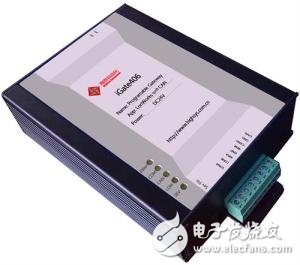The LonTalk protocol offers a comprehensive set of communication services that allow devices on a network to send and receive messages without needing to know the network topology, the names, addresses, or functionalities of other devices. It selectively provides end-to-end message acknowledgment, message retransmission, and priority transmission to manage transaction limitations effectively. Network management services support remote interaction with devices, enabling tasks like reconfiguration of addresses, parameter adjustments, application downloads, problem reporting, and device control.
LonTalk is designed to operate over various physical media, including power lines, twisted pair cables, wireless (RF), infrared (IR), coaxial cables, and fiber optics. This versatility makes it highly adaptable for different environments and applications.

In control systems, a flat, peer-to-peer (P2P) architecture is often preferred for automated control. Unlike hierarchical structures, which rely on a central point of control, P2P eliminates single points of failure. In traditional setups, communication between non-central devices requires passing through a central node, increasing complexity and potential failure points. With P2P, devices can communicate directly, reducing bottlenecks and improving reliability. Additionally, in a P2P system, failures are more localized, affecting only one device rather than potentially multiple nodes in a non-P2P setup.
LonTalk uses an improved CSMA (Carrier Sense Multiple Access) protocol, known as Predictable P Persistence CSMA. This method enhances efficiency by allowing nodes to wait for a random time before accessing the medium, based on network load. The protocol dynamically adjusts waiting times to minimize collisions and improve throughput. When the network is lightly loaded, nodes transmit quickly; when heavily loaded, they wait longer to avoid conflicts.

The LonTalk protocol is structured into several layers:
**1. Physical Layer**:
This layer handles the transmission of data over physical media such as twisted pair, power lines, RF, IR, coaxial cable, and fiber optics. It supports network segmentation, where different segments can use different media connected via routers. LonWorks transceivers act as interfaces between the Neuron chip and the transmission medium.
**2. Data Link Layer**:
Responsible for reliable data transmission over the physical link, this layer includes MAC (Media Access Control) and LLC (Logical Link Control) sublayers. The MAC protocol ensures efficient access to the network, using predictable P persistence to reduce collisions. If hardware collision detection is available, the protocol supports automatic retransmission.
**3. Network Layer**:
This layer manages addressing and routing. It defines a layered addressing scheme: domain, subnet, and node. Each domain can have up to 255 subnets, with 127 nodes per subnet. Group addressing allows multiple nodes to receive the same message efficiently, reducing address overhead.
**4. Transport Layer**:
The transport layer ensures reliable message delivery between processes. It provides both acknowledgment (end-to-end) and non-acknowledgment services. Acknowledged messages require responses from all recipients, while non-acknowledged messages are sent without confirmation. This layer also manages timers for retransmission and response handling.
**5. Session Layer**:
This layer enables dialogue management and user identification. It supports request-response mechanisms, making it ideal for remote procedure calls and client-server interactions. Applications can poll network variables automatically using this mechanism.
**6. Presentation Layer**:
This layer translates application data into a format that can be understood across the network. It introduces network variables—shared data items that can be single-byte or multi-byte, up to 31 bytes. Users can define custom network variables, and standard ones (SNVTs) are provided for common data types like temperature and pressure.
**7. Application Layer**:
The topmost layer interacts directly with user applications. It includes objects like IPO (Input/Output) objects, timers, network variables, and message tags. Nodes can be based on Neuron chips or host processors, and their functionality is defined by software configurations stored in memory.
LonTalk also provides tools like LonBuilder, NodeBuilder, LonManager, and LonMaker to simplify development, installation, and maintenance. These tools automate complex tasks, ensuring compliance with LonTalk rules and reducing the need for deep technical knowledge. While network variables offer a simple way to exchange data, explicit messages provide more flexibility, requiring developers to handle message buffers, addresses, and retransmission logic manually.
Overall, the LonTalk protocol is a robust and flexible solution for building reliable, scalable, and interoperable control networks. Its design emphasizes simplicity, adaptability, and ease of use, making it a popular choice in industrial automation and smart home systems.
Ultrasonic Sensor
Yuhai Company is engaged to research
and development of piezoelectric products
and related piezoelectric products, the related piezoelectric products includes the piezo sensors and transducer.
The ultrasonic transducer is a kind of transducer that converts the ultrasonic signal into electric signal, or vice versa. Ultrasound transmitter and receiver is a transducer that can transmit and receive ultrasound. Ultrasound sensor is a kind of sensor, in essence, it is also a transmitter and receiver. The working principle of this kind of equipment is similar to that of radar and sonar. Active ultrasonic sensors can emit and receive reflected waves, and determine the distance of the target by measuring the time interval between transmission and reception. Passive ultrasonic sensor is actually a microphone that can convert ultrasonic signal into electrical signal.
According to the working principle and materials used, the ultrasonic transducer has piezoelectric transducer, electrostatic transducer (capacitive transducer), magnetostrictive transducer, electromagnetic acoustic transducer, mechanical transducer and other types [1].
Ultrasonic Sensor,Piezo Sensor,Ultrasonic Piezo Disc,Ultrasonic Piezo Elements
Zibo Yuhai Electronic Ceramic Co., Ltd. , https://www.yhpiezo.com
